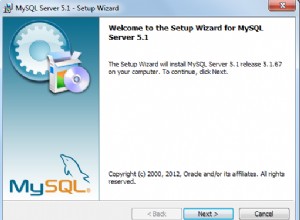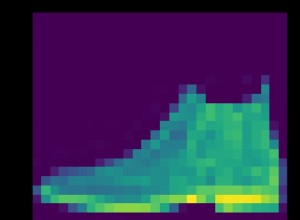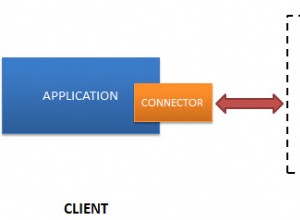Usa il code proprietà di PDOException per ottenere SQLSTATE . Vedi la documentazione per PDOException
Per controllare SQLSTATE generato da una funzione PL/PgSQL che genera un errore, si utilizza RAISE ... SQLSTATE come da documentazione
.
Naturalmente, affinché ciò funzioni, il driver del database deve riportare correttamente SQLSTATE . Ho verificato che PDO lo fa almeno in PHP 5.4.11 con PostgreSQL 9.2, secondo il seguente codice di esempio autonomo che può essere eseguito con php eseguibile da riga di comando:
<?php
$pdo = new PDO('pgsql:');
$sql = <<<EOD
CREATE OR REPLACE FUNCTION exceptiondemo() RETURNS void AS $$
BEGIN
RAISE SQLSTATE 'UE001' USING MESSAGE = 'error message';
END;
$$ LANGUAGE plpgsql
EOD;
$sth = $pdo->prepare($sql);
if (!$sth->execute()) {
die("Failed to create test function\n");
}
$sql = "SELECT exceptiondemo();";
$sth = $pdo->prepare($sql);
if (!$sth->execute()) {
$ei = $sth->errorInfo();
die("Function call failed with SQLSTATE " . $ei[0] . ", message " . $ei[2] . "\n");
// Shortcut way:
// die("Function call failed with SQLSTATE " . $sth->errorCode());
}
?>
L'output è:
Function call failed with SQLSTATE UE001, message ERROR: error message
Sostituisci il blocco di codice dal secondo $sth->execute() alla fine del codice con questo per dimostrare che anche la modalità di gestione delle eccezioni funziona bene:
$pdo->setAttribute(PDO::ATTR_ERRMODE, PDO::ERRMODE_EXCEPTION);
try {
$sth->execute();
} catch (PDOException $err) {
$ei = $err->errorInfo;
die("Function call failed with SQLSTATE " . $ei[0] . ", message " . $ei[2] . "\n");
// Alternate version to just get code:
//die("Function call failed with SQLSTATE " . $err->getCode() . "\n");
}




